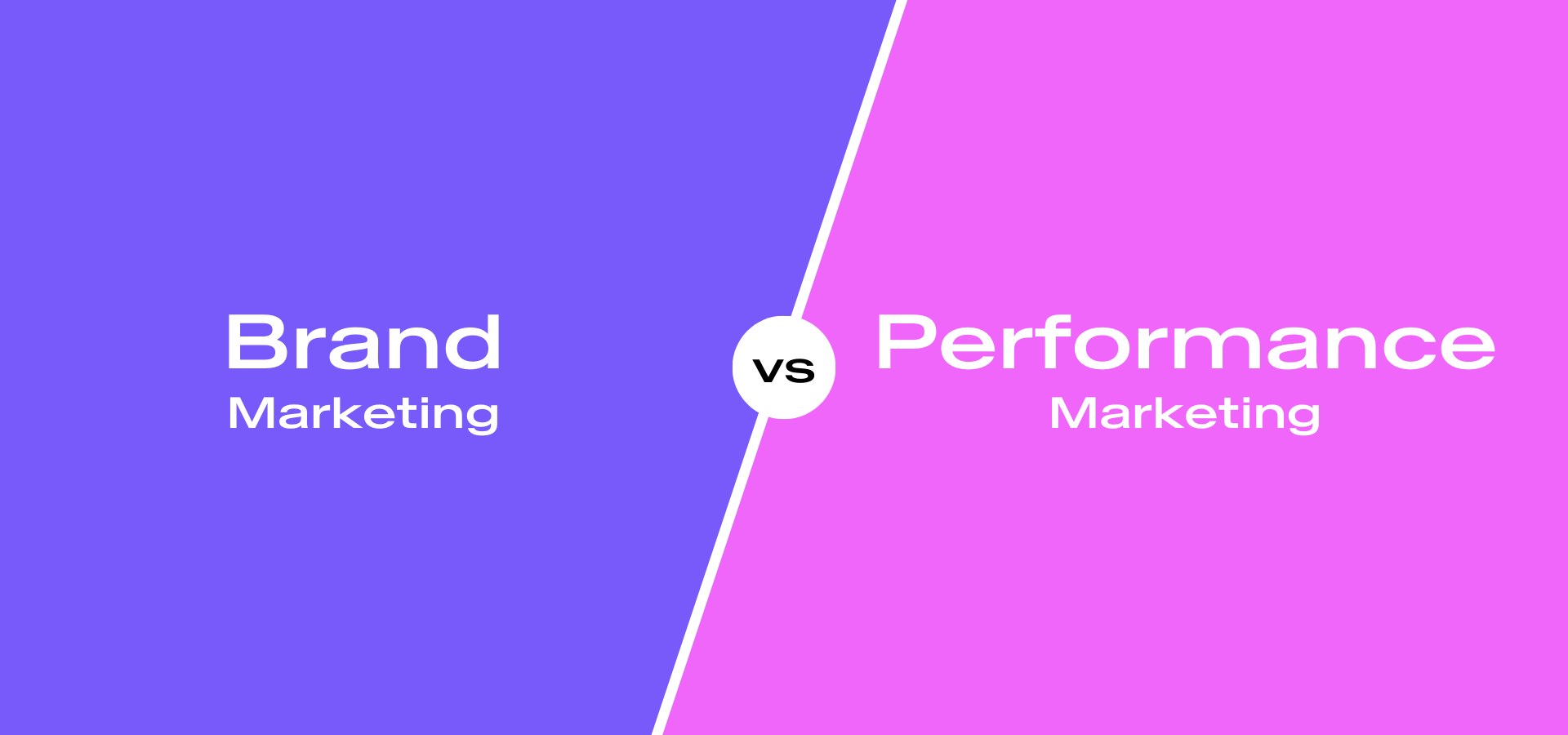Marketing leaders have debated the merits of short-term, measurable tactics versus long-term, perception-driven work for decades. At the center of that debate sits a clear choice many businesses face: prioritize immediate returns or invest in building the emotional and reputational capital that pays off over years. This article walks through what performance and brand marketing really do, how they differ, when each one wins, and how to blend the two into a strategy that delivers both growth and resilience.
What performance marketing and brand marketing actually mean
Performance marketing is defined by measurability and outcomes that map directly to business results: clicks, leads, purchases, installs, or any action with an economic value assigned. Every dollar spent in performance channels is typically tied to an expected return on ad spend or cost per acquisition. Tactics include paid search, programmatic display with conversion tracking, affiliate partnerships, and conversion-optimized social ads. The appeal is obvious: tight feedback loops allow marketers to test, iterate, and scale what works quickly.
Brand marketing focuses on awareness, preference, and emotional connection. It is less about an immediate click and more about shaping how audiences think and feel about a product or company. Brand work uses long-form storytelling, sponsorships, large-scale video, and integrated campaigns to influence perceptions over time. The payoff from brand investment is often diffuse: improved customer lifetime value, reduced price sensitivity, stronger word-of-mouth, and a higher baseline conversion rate when performance campaigns run.
How they differ in goals, metrics, and timelines
The primary difference is time horizon and attribution clarity. Performance marketers ask: did this campaign deliver x conversions at y cost? Brand marketers ask: how did this campaign shift awareness, consideration, and affinity among target audiences? Performance measurement lives in dashboards that update hourly; brand measurement relies on surveys, brand lift studies, share-of-voice analysis, and longitudinal sales trends.
Because of that difference, budget allocation often reflects risk tolerance and business lifecycle stage. Startups chasing product-market fit and revenue may skew heavily toward performance spending to maximize runway efficiency. Market leaders in competitive categories often invest more in brand to protect market share and reduce reliance on paid performance channels.
When performance marketing wins
Performance marketing wins when the objective is immediate and measurable: driving signups during a product launch, selling seats to a time-limited webinar, or scaling an ecommerce SKU with proven conversion rates. It shines in environments where the funnel is short and data is abundant. A well-optimized performance campaign can scale rapidly because every increment of spend has a predictable delta in results, making it ideal for tactical growth and testing new value props.
Performance marketing also excels when the product experience is strong and the market is price- or incentive-responsive. In those situations, increasing ad spend usually translates into more customers without much additional brand work. The discipline of continuous A/B testing, conversion rate optimization, and attribution modeling allows teams to lower acquisition costs over time.
When brand marketing wins
Brand marketing wins when the objective is to build defensibility and long-term growth. For complex purchase decisions, where trust and reputation matter, brand investment reduces friction and increases the probability of a conversion when a performance touchpoint appears. Brand campaigns are also essential when competition centers on differentiation beyond price—such as sustainability, heritage, or design leadership.
Brands that invest consistently in storytelling create cultural associations that drive organic discovery and reduce paid dependency. If a brand can own a mental category or a set of cultural cues, it becomes the first choice for consumers and earns higher margins. In many mature categories, sustained brand investment is what separates price-takers from price-makers.
How to choose: variables that should guide your decision
Choice depends on your company’s stage, cash flow, unit economics, and competitive intensity. If you are running experiments and need rapid feedback to validate product hypotheses, prioritize performance. If customer lifetime value is high and the market is crowded, investing in brand will protect and grow your long-term stake.
Another variable is the complexity of the purchase. For impulse or low-cost items, repeated performance pushes can be sufficient. For high-consideration or high-ticket purchases, consumers need multiple touchpoints; a single performance ad rarely closes a sale. In such cases, brand investments that move consumers through awareness and consideration dramatically improve conversion rates for later performance campaigns.
A practical framework for blending both approaches
Treat the two disciplines as complementary rather than mutually exclusive. Start by defining north-star metrics for each: choose acquisition cost, conversion rate, and payback period for performance; choose awareness, consideration lift, and branded search growth for brand. Align reporting cadences: performance on weekly or daily dashboards and brand measurement on monthly or quarterly reviews.
Allocate test budgets so that short-term needs are met without starving brand-building. For example, set a minimum brand allocation that ensures continuity in storytelling while allowing performance teams to experiment with messaging that feeds back into brand insights. Use performance campaigns to amplify strong brand creative—run prospecting ads that are creative-led and retargeting ads that are conversion-focused. This creates a loop where brand assets improve performance, and performance learnings inform brand messaging.
Use controlled experiments to quantify the impact of brand on conversion. Run brand lift studies and observe changes in organic branded search, conversion velocity, and retention before and after major brand pushes. When those metrics move, you can justify continued brand spending with clearer ROI signals.
Real-world trade-offs and a sample timeline
Imagine a consumer tech startup entering a new market. In month one, the team focuses on performance to drive early user acquisition and collect behavioral data. In month two, they layer lightweight brand storytelling—short films, founder narratives, or customer stories—to begin building preference. By month three, they scale performance with creative informed by brand testing. Over a year, the company maintains a steady brand baseline while using performance to capture demand spikes and iteratively improve the funnel.
The trade-off here is simple: short-term growth metrics may be lower during the initial brand-building phase, but mid-term conversion rates and retention often increase, improving unit economics. Conversely, companies that over-index on performance may see rapid growth that stalls as audience saturation and creative fatigue set in.
Practical tips for implementation and measurement
First, avoid treating brand performance as unmeasurable. Use qualitative and quantitative tools together. Brand lift surveys, uplift in branded search volume, and changes in organic referral traffic are measurable proxies for brand health. Second, unify creative processes so messaging is consistent across performance and brand assets. Consistent visual and tonal cues increase the effectiveness of retargeting and reduce cognitive friction for consumers. Third, prioritize attribution models that account for multiple touchpoints. Multi-touch attribution or incremental lift measurement can reveal how brand investments influence downstream conversions.
Invest in skills too. Performance teams need analytical rigor, attribution knowledge, and experimentation discipline. Brand teams need storytelling craft, insight into cultural trends, and long-form campaign planning. Cross-functional collaboration ensures neither team operates in a silo.
When to prefer one over the other: quick decision guide
If capital is scarce and you must show immediate returns to stakeholders, emphasize performance. If you operate in a mature category where emotional differentiation matters and you can sustain a longer planning horizon, invest in brand. If you are expanding globally into unfamiliar markets, combine local performance experiments with brand narratives that build trust at scale. If your product has high lifetime value, allocate more to brand because the long-term returns compound.
How to upskill: resources and training
If you or your team need structured learning, consider targeted training that covers measurement, creative strategy, and channel execution. A good performance marketing course online can provide the tactical frameworks to run experiments, model unit economics, and optimize digital funnels. Likewise, workshops on brand strategy, storytelling, and media planning help build long-term thinking.
Final recommendation: a blended, test-driven approach
The binary choice between Performance Marketing vs Brand Marketing is less relevant than the question of how to integrate them effectively. The highest-performing organizations use data to guide tactical decisions while protecting a baseline investment in brand. They test, measure, and iterate, creating a virtuous cycle where brand lifts performance and performance informs brand. For most businesses, the best approach is not an either/or but a dynamic allocation that shifts with lifecycle, market conditions, and strategic priorities.
Make the decision explicit in your planning process. Define short-term and long-term goals, commit to measurement frameworks for both, and ensure creative consistency across channels. With disciplined testing an






